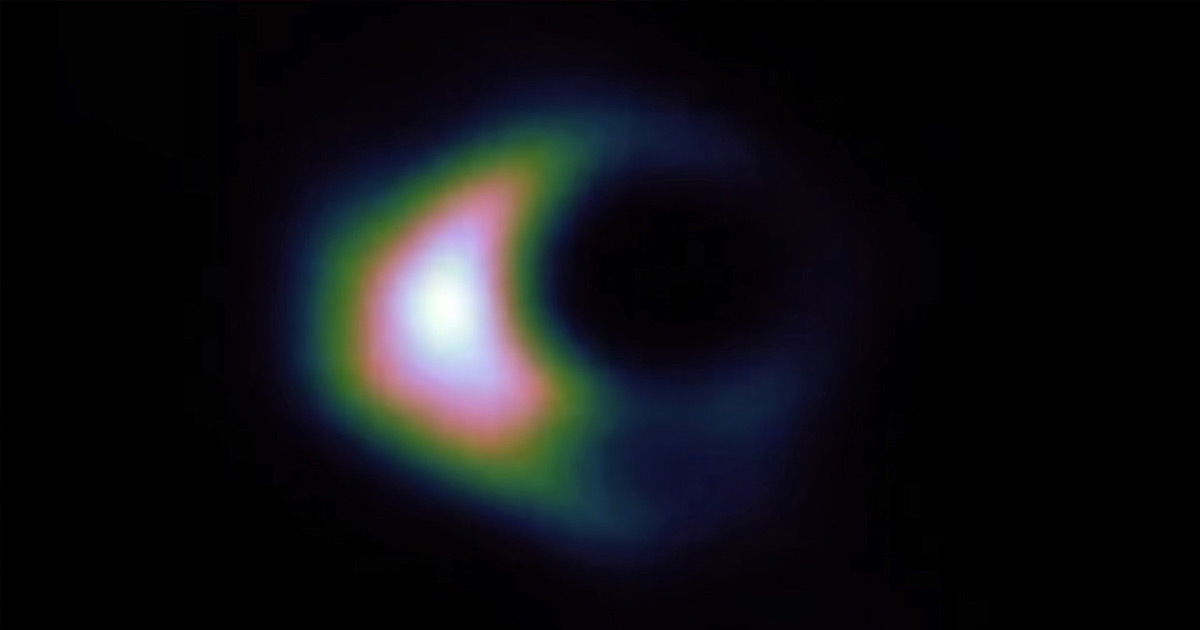Within general relativity, black holes are easy to define. They are objects with an event horizon. This horizon is like a line in the sand, where anything crossing it is forever trapped within the black hole. Quantum theory might allow for energy to escape through Hawking radiation, but classical black holes are a one-way trip.
Observationally, black holes are a bit less defined. We have observed objects so dense that they can’t be regular matter, and we’ve captured the shadow of supermassive black holes in both our own galaxy and M87. Through gravitational wave observatories, we have seen the merger of dense black holes and the gravitational waves they emit match general relativity to the limits of observation. So we know black holes exist. But does that mean that everything we see that looks like a black hole actually is a black hole? Not necessarily.
Even though observational evidence for black holes is very strong, it can be useful to look at other objects that could have a similar appearance. These unusual objects might not exist, but it’s a good way to make sure we don’t become overconfident in our scientific models. This is why a team looked at the astronomical properties of topological solitons.
A soliton is a self-reinforcing wave effect. They were first observed as a rise of water traveling within a canal. Unlike regular waves, they maintain their shape for long periods of time, almost as if they were an object. Water wave solitons have been studied in the lab since the late 1800s, and optical solitons were first created in glass fibers in the 1980s. They are a well-known physical phenomenon. A topological soliton is a mathematical description of this effect.
For this work, the team looked at how topological solitons within general relativity would gravitationally lens light and compared it to the way black holes lens light. They found the two were remarkably similar. So similar that it would be difficult for astronomers to distinguish. In principle, if we observed starlight to be strongly lensed by an object, it could be a black hole or a soliton.

The work shows that a soliton object would look like a black hole to astronomers, but wouldn’t have an event horizon. If two solitons were to merge, the gravitational waves they produced would also be similar to those of black holes. It’s an interesting result, but that doesn’t disprove black holes quite yet. The team didn’t address how such strange solitons would form. Everything we know about stars tells us that large stars would collapse into a black hole, not a soliton.
But there are some interesting if very unlikely options for solitons. Solitons show up as solutions in quantum theory, such as Bose-Einstein condensates, so perhaps a strange star comprised of bosons could end its life as a soliton. These hypothetical boson stars or Proca stars as they are sometimes known are the boson sibling of fermion stars such as neutron stars or quark stars. Known boson matter couldn’t become a Proca star, but if dark matter is comprised of bosons then some of it might form a Proca star.
All of this is very speculative. But it’s a fun idea to think about. Based on all we know, some of those stellar-mass black holes we observe in our galaxy might be a strange boson stars in disguise.
Reference: Heidmann, Pierre, Ibrahima Bah, and Emanuele Berti. “Imaging Topological Solitons: the Microstructure Behind the Shadow.” Physical Review D 107.8 (2023): 084042


These hypothetical soliton solutions are based on string theory with hidden dimensions, not on general relativity.